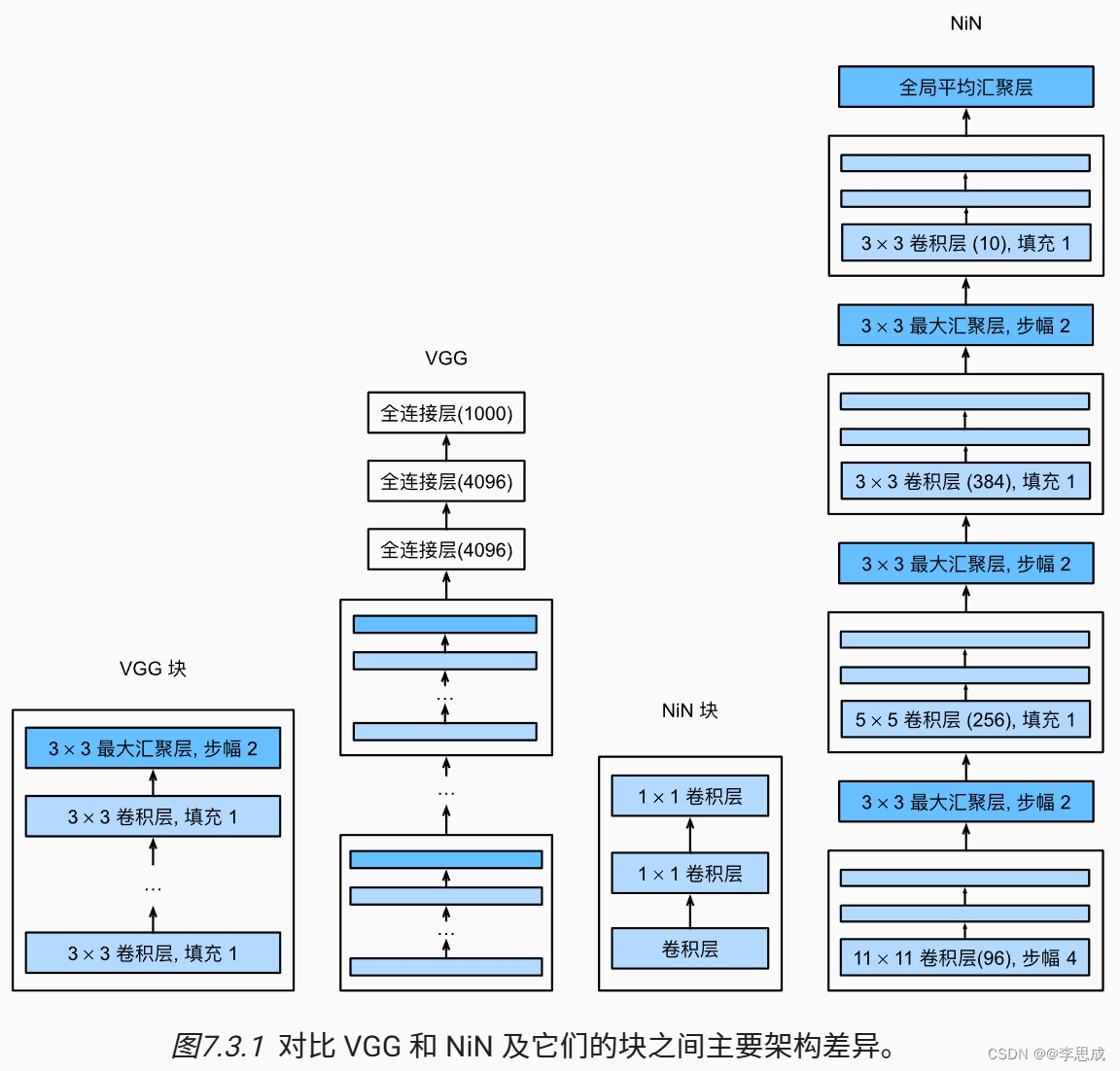26网络中的网络NiN

python
import torch
from torch import nn
import liliPytorch as lp
import matplotlib.pyplot as plt
# 定义一个NiN块
def nin_block(in_channels, out_channels, kernel_size, strides, padding):
return nn.Sequential(
# 传统的卷积层
nn.Conv2d(in_channels, out_channels, kernel_size, strides, padding),
nn.ReLU(), # 激活函数ReLU
# 1x1卷积层
nn.Conv2d(out_channels, out_channels, kernel_size=1),
nn.ReLU(),
# 另一个1x1卷积层
nn.Conv2d(out_channels, out_channels, kernel_size=1),
nn.ReLU()
)
# 设置dropout的概率
dropout = 0.5
# 定义NiN模型
net = nn.Sequential(
# 第一个NiN块,输入通道数为1,输出通道数为96
nin_block(1, 96, kernel_size=11, strides=4, padding=0),
# 最大池化层
nn.MaxPool2d(kernel_size=3, stride=2),
# 第二个NiN块,输入通道数为96,输出通道数为256
nin_block(96, 256, kernel_size=5, strides=1, padding=2),
# 最大池化层
nn.MaxPool2d(kernel_size=3, stride=2),
# 第三个NiN块,输入通道数为256,输出通道数为384
nin_block(256, 384, kernel_size=3, strides=1, padding=1),
# 最大池化层
nn.MaxPool2d(kernel_size=3, stride=2),
# Dropout层,用于防止过拟合
nn.Dropout(dropout),
# 最后一个NiN块,输入通道数为384,输出通道数为10
nin_block(384, 10, kernel_size=3, strides=1, padding=1),
# 全局平均池化层,将特征图的每个通道的空间维度调整为1x1
nn.AdaptiveAvgPool2d((1, 1)),
nn.Flatten()
)
X = torch.rand(size=(1, 1, 224, 224))
for layer in net:
X = layer(X)
print(layer.__class__.__name__,'output shape:\t', X.shape)
"""
Sequential output shape: torch.Size([1, 96, 54, 54])
MaxPool2d output shape: torch.Size([1, 96, 26, 26])
Sequential output shape: torch.Size([1, 256, 26, 26])
MaxPool2d output shape: torch.Size([1, 256, 12, 12])
Sequential output shape: torch.Size([1, 384, 12, 12])
MaxPool2d output shape: torch.Size([1, 384, 5, 5])
Dropout output shape: torch.Size([1, 384, 5, 5])
Sequential output shape: torch.Size([1, 10, 5, 5])
AdaptiveAvgPool2d output shape: torch.Size([1, 10, 1, 1])
Flatten output shape: torch.Size([1, 10])
"""
lr, num_epochs, batch_size = 0.1, 10, 128
train_iter, test_iter = lp.loda_data_fashion_mnist(batch_size, resize=224)
lp.train_ch6(net, train_iter, test_iter, num_epochs, lr, lp.try_gpu())
plt.show() # 显示绘图
# loss 0.342, train acc 0.873, test acc 0.871
# 1395.1 examples/sec on cuda:0运行结果:
